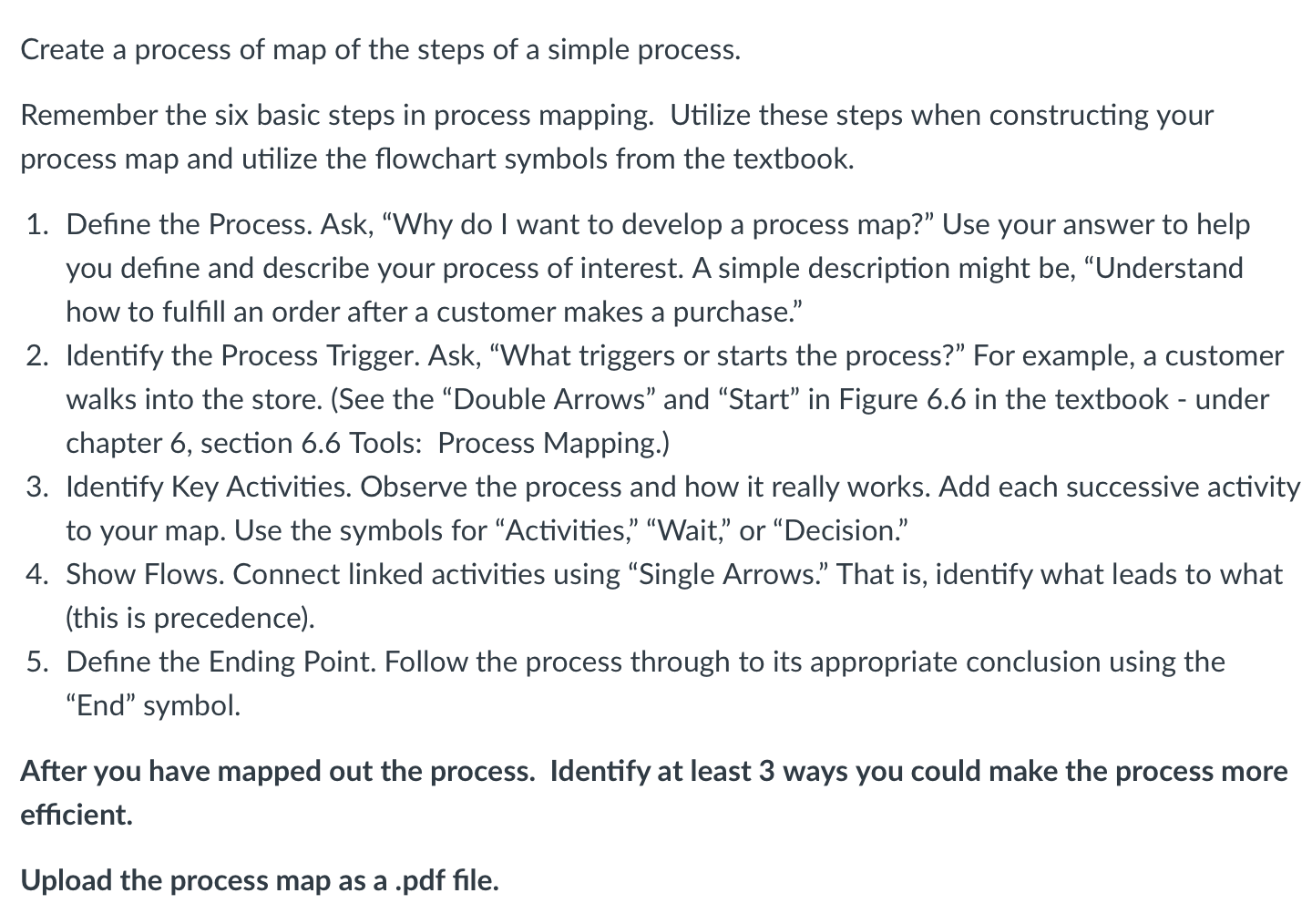Answered step by step
Verified Expert Solution
Question
1 Approved Answer
Create a process of map of the steps of a simple process. Remember the six basic steps in process mapping. Utilize these steps when constructing
 Create a process of map of the steps of a simple process. Remember the six basic steps in process mapping. Utilize these steps when constructing your process map and utilize the flowchart symbols from the textbook. 1. Define the Process. Ask, "Why do I want to develop a process map?" Use your answer to help you define and describe your process of interest. A simple description might be, "Understand how to fulfill an order after a customer makes a purchase." 2. Identify the Process Trigger. Ask, "What triggers or starts the process?" For example, a customer walks into the store. (See the "Double Arrows" and "Start" in Figure 6.6 in the textbook - under chapter 6, section 6.6 Tools: Process Mapping.) 3. Identify Key Activities. Observe the process and how it really works. Add each successive activit) to your map. Use the symbols for "Activities," "Wait," or "Decision." 4. Show Flows. Connect linked activities using "Single Arrows." That is, identify what leads to what (this is precedence). 5. Define the Ending Point. Follow the process through to its appropriate conclusion using the "End" symbol. After you have mapped out the process. Identify at least 3 ways you could make the process more efficient. Upload the process map as a .pdf file
Create a process of map of the steps of a simple process. Remember the six basic steps in process mapping. Utilize these steps when constructing your process map and utilize the flowchart symbols from the textbook. 1. Define the Process. Ask, "Why do I want to develop a process map?" Use your answer to help you define and describe your process of interest. A simple description might be, "Understand how to fulfill an order after a customer makes a purchase." 2. Identify the Process Trigger. Ask, "What triggers or starts the process?" For example, a customer walks into the store. (See the "Double Arrows" and "Start" in Figure 6.6 in the textbook - under chapter 6, section 6.6 Tools: Process Mapping.) 3. Identify Key Activities. Observe the process and how it really works. Add each successive activit) to your map. Use the symbols for "Activities," "Wait," or "Decision." 4. Show Flows. Connect linked activities using "Single Arrows." That is, identify what leads to what (this is precedence). 5. Define the Ending Point. Follow the process through to its appropriate conclusion using the "End" symbol. After you have mapped out the process. Identify at least 3 ways you could make the process more efficient. Upload the process map as a .pdf file Step by Step Solution
There are 3 Steps involved in it
Step: 1

Get Instant Access to Expert-Tailored Solutions
See step-by-step solutions with expert insights and AI powered tools for academic success
Step: 2

Step: 3

Ace Your Homework with AI
Get the answers you need in no time with our AI-driven, step-by-step assistance
Get Started


